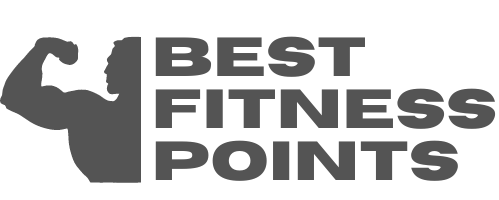How to Eat 165 Grams of Protein a Day: Simple Tips and Tricks
Last Updated on January 3, 2024 by Justin Harris
How To eat 165 grams of protein a day, focus on consuming high-protein foods such as chicken, turkey, beef, fish, Greek yogurt, cottage cheese, eggs, tofu, tempeh, lentils, chickpeas, beans, quinoa, and edamame. Incorporating these sources into your meals and snacks can help meet your protein goals.

Avoid relying solely on one type of protein and aim for variety. Additionally, consider portion sizes and spreading your protein intake across multiple meals throughout the day for optimal absorption and utilization.
Importance Of Protein In Your Diet
The importance of protein in your diet cannot be overstated. Protein serves as a building block for muscles, helping in their growth and repair. It also plays a vital role in weight loss and muscle gain. A high-protein diet can increase satiety, reduce cravings, and boost metabolism, leading to greater fat burning.
When aiming to consume 165 grams of protein a day, it is important to include a variety of high-protein foods in your meals. Some examples include poultry such as chicken and turkey, meat like beef and lamb, fish like salmon and tuna, dairy products such as Greek yogurt and cottage cheese, eggs, and plant-based proteins like tofu, lentils, and legumes. These protein-rich foods can be easily incorporated into a well-balanced diet.
It is worth noting that while protein is essential for good health, consuming excessive amounts can strain the kidneys and lead to other health issues. It is recommended to consult with a healthcare professional or a registered dietitian to determine the ideal protein intake based on your individual needs and goals.
Calculating Your Protein Intake Requirements
To calculate your daily protein intake goal, you need to consider various factors that affect your protein needs. These factors include your age, sex, activity level, and overall health. Generally, the recommended protein intake for adults is around 0.8 grams per kilogram of body weight. However, if you are more physically active or have specific goals such as building muscle, you may need to consume more protein.
To determine your specific daily protein goal, you can use a simple formula. Multiply your weight in kilograms by the recommended protein intake per kilogram. For example, if you weigh 70 kilograms and the recommended intake is 0.8 grams per kilogram, your daily protein goal would be 56 grams.
It’s important to note that the quality of protein sources also plays a role. Some high-protein food sources include poultry, meat, fish, dairy, eggs, and plant-based proteins like tofu and legumes.
Remember, consuming enough protein is essential for maintaining optimal health and achieving your fitness goals, but it’s equally important to have a balanced diet that includes a variety of nutrients.
Planning Your Daily Meals
Meal planning strategies to meet your protein needs
When it comes to eating 165 grams of protein a day, it’s important to plan your meals ahead of time to ensure you’re meeting your protein goals. Here are some meal planning strategies:
- Include protein-rich foods: Incorporate a variety of high-protein foods into your meals, such as poultry, meat, fish, dairy, eggs, and plant-based proteins like tofu, tempeh, lentils, chickpeas, beans, quinoa, edamame, and other legumes.
- Balance your meals: Distribute your protein intake evenly throughout the day by including protein sources in each meal and snack.
- Try simple and delicious meal ideas: Consider options like protein French toast made with almond milk, bread, butter, cinnamon, and stevia or crispy chickpea trail mix made with garbanzo beans, pumpkin seeds, maple syrup, orange peel, and olive oil.
By following these meal planning strategies and incorporating protein-rich foods into your daily meals, you can easily meet your protein needs and achieve your health and fitness goals.
Read Also,
- Is Jeremy Ethier Good?
- Best Treadmill Under 300
- Is Get Healthy U TV Legit?
- Best Elliptical Under 600
- Best Exercise Bike Under 200
- Best Elliptical for Short Person
- Best Sauna Suit for Weight Loss
- Best Rowing Machine Under 500
- Best Rowing Machine Under 200
- Best Elliptical Machine Under 1000
- Which is Better Hydroxycut Or Dexatrim?
Incorporating Protein-rich Foods
Incorporating protein-rich foods into your diet is essential for meeting your daily protein intake goals. Include a variety of sources such as poultry, meat, fish, dairy, eggs, and plant-based proteins like tofu, lentils, and quinoa. These options will help you consume 165 grams of protein a day, promoting muscle growth and overall health.
Extensive List Of Protein-rich Foods
Creative ways to incorporate protein into your meals and snacks:
- Poultry: Chicken, turkey, duck
- Meat: Beef, pork, lamb
- Fish: Salmon, tuna, cod, tilapia
- Dairy: Greek yogurt, cottage cheese, milk
- Eggs: Whole eggs or egg whites
- Plant-based proteins: Tofu, tempeh, lentils, chickpeas, beans, quinoa, edamame, and other legumes
These protein-rich foods provide a variety of options for adding nutrients to your diet. Including these foods in your meals and snacks can help you meet the recommended daily protein intake of 165 grams. Additionally, they are versatile and can be prepared and incorporated into various dishes to suit your taste and preferences.
Remember, it’s important to consume an adequate amount of protein for your body’s needs. Always consult with a healthcare professional or registered dietitian to determine the right amount of protein for you and your specific goals.
Protein Supplement Options
When it comes to consuming a high amount of protein, protein supplements can be a convenient option. There are several common types of protein supplements to choose from, including:
- Whey protein: Derived from milk, whey protein is fast-digesting and rich in essential amino acids.
- Casein protein: Also derived from milk, casein protein is slow-digesting and provides a sustained release of amino acids.
- Plant-based protein: Options such as pea, rice, and hemp protein are suitable for vegetarians and vegans.
- Egg protein: Derived from egg whites, this protein source is easily digestible and low in fat.
- Collagen protein: Known for its benefits for skin, hair, and joint health.
When choosing a protein supplement, it’s important to consider your lifestyle and dietary preferences. Some factors to consider include taste, texture, allergens, and digestive tolerability. Additionally, check for third-party testing for quality and purity. Remember, protein supplements are not a substitute for a balanced diet, so try to prioritize whole food sources of protein whenever possible.
Conclusion
To ensure you meet your daily protein intake of 165 grams, incorporate a variety of high-protein foods into your diet. These can include poultry, meat, fish, dairy, eggs, and plant-based proteins like tofu and legumes. Remember to balance your protein intake with other nutrients for a well-rounded diet.
By making conscious choices and incorporating these protein-rich options, you can easily reach your protein goals and support your overall health and fitness journey. Prioritize your protein intake, and you’ll see the difference it makes in your body and well-being.






